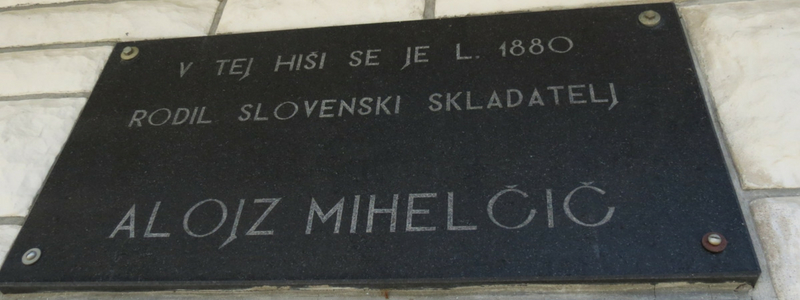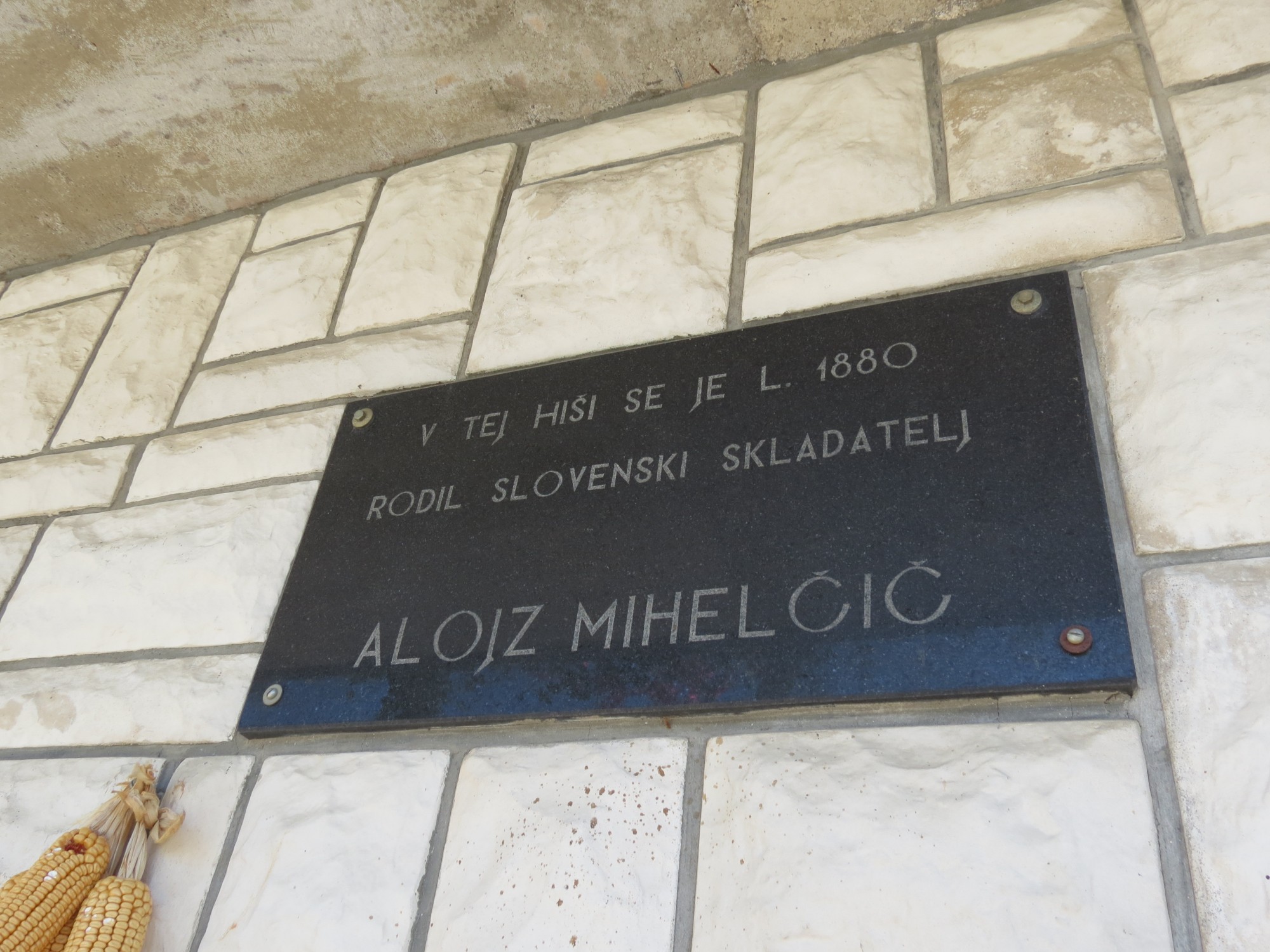On the centennial of the composer’s birth, Harije local community had a memorial plaque attached to the house situated on the approximate site where his birthplace once stood.
Alojzij Mihelčič
Alojzij Mihelčič (1880–1975) was a devoted church music composer.
Mihelčič was born in Harije. He graduated from the organ school in Ljubljana in 1896, and first worked as an organist in Velika Štanga and Metlika, where the concerts of the 36-strong choir he formed and conducted generated widespread attention. In 1935, he was elected mayor of Celje and then a member of parliament, which paved the way for his political career. He was appointed the first President of the Yugoslav National Assembly and a member of the Senate of the Kingdom of Yugoslavia. Despite these achievements, Mihelčič never lost interest in music. He was long-time member of the Celje Glasbena matica Music Society.
He mostly composed church music, employing all genres of music composition. The style of his church pieces follows in the tradition of nineteenth-century choral music, which sought its semantic value in contact with, and in relation to, folk song. While most of his compositions received positive responses – published mainly in Cerkveni glasbenik (Church Musician) – some, primarily his early works, were criticised for their maladroit and simplistic invention. Later, his music unequivocally grew to attain greater harmonic as well as rhythmic dynamics (more daring use of modulation), most notably in the collection Pet velikonočnih pesmi (Five Easter Songs) and Materi Mariji (To Mother Mary), a piece for male choir published in 1906. Laudes eucharisticae, four Latin Eucharistic songs commended by the then editor of Cerkveni glasbenik, Andrej Karlin, for exhibiting composing progress, were published in 1908. The 1911 Božične pesmi (Christmas Songs) earned him higher praise from Stanko Premrl, who complimented the cycle’s rich invention, composed in the church spirit and imbued with a harmonically refined grace befitting the Christmas season. Soon after, Mihelčič wrote Tantum ergo, his first composition in a minor key.
His most popular religious compositions form part of the collection 24 Marijinih pesmi za mešani zbor in orgle (24 Marian Songs for Mixed Choir and Organ). After World War II, Mihelčič adapted several of his pieces for two-part children’s choir or congregational singing with organ or harmonium accompaniment.
Most of his secular music consists of arrangements of folk melodies, and some art choral pieces. He translated the harrowing experience of World War I into a known composition, the cycle Nebo žari (The Sky Is Ablaze), settings of poems by Silvin Sardenko that echo the national spirit and were reprinted in as many as 12 independent editions.
Mihelčič’s contemporaries tended to draw analogies between his output, marked by a simpler yet efficient musical texture, and the style of another composer, Father Angelik Hribar. In 1921, one of these compositions reflecting Hribar’s style, Zahvalna pesem (Thanksgiving Song), was performed during a ceremony commemorating a seminal event in the history of Franciscan spirituality (the 700th anniversary of the establishment of the Third Order of Saint Francis).
Maia Juvanc


